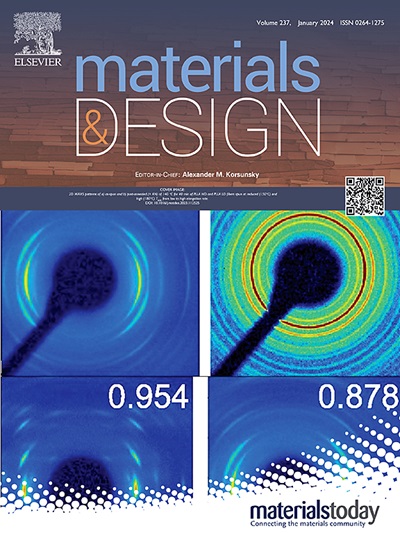Bandgap formation and tuning in gyroid lattice structures: Simulations and experiments
IF 7.6
2区 材料科学
Q1 MATERIALS SCIENCE, MULTIDISCIPLINARY
引用次数: 0
Abstract
This study provides a comprehensive investigation of the mechanical bandgap characteristics of gyroid lattice structures. Two methods are used to predict the bandgaps. The first examines wave dispersion in a single unit cell to identify bandgaps through dispersion curves. The second employs harmonic analysis on a finite structure to calculate its steady-state response and plot the frequency response function (FRF). To validate the numerical predictions, PLA matrix and network gyroids samples are manufactured using Fused Deposition Modeling (FDM) and tested for vibration attenuation. The network gyroid demonstrated superior bandgap performance compared to the matrix gyroid, with the broadest bandgap spanning between 6.61 kHz and 7.74 kHz. Parametric studies revealed that the wall thickness, unit cell size, and material properties significantly influence the location and bandwidth of bandgaps, enabling their precise tuning. These findings highlight the potential of the network gyroid structures for vibration-sensitive engineering applications.

求助全文
约1分钟内获得全文
求助全文
来源期刊

Materials & Design
Engineering-Mechanical Engineering
CiteScore
14.30
自引率
7.10%
发文量
1028
审稿时长
85 days
期刊介绍:
Materials and Design is a multi-disciplinary journal that publishes original research reports, review articles, and express communications. The journal focuses on studying the structure and properties of inorganic and organic materials, advancements in synthesis, processing, characterization, and testing, the design of materials and engineering systems, and their applications in technology. It aims to bring together various aspects of materials science, engineering, physics, and chemistry.
The journal explores themes ranging from materials to design and aims to reveal the connections between natural and artificial materials, as well as experiment and modeling. Manuscripts submitted to Materials and Design should contain elements of discovery and surprise, as they often contribute new insights into the architecture and function of matter.
 求助内容:
求助内容: 应助结果提醒方式:
应助结果提醒方式:


